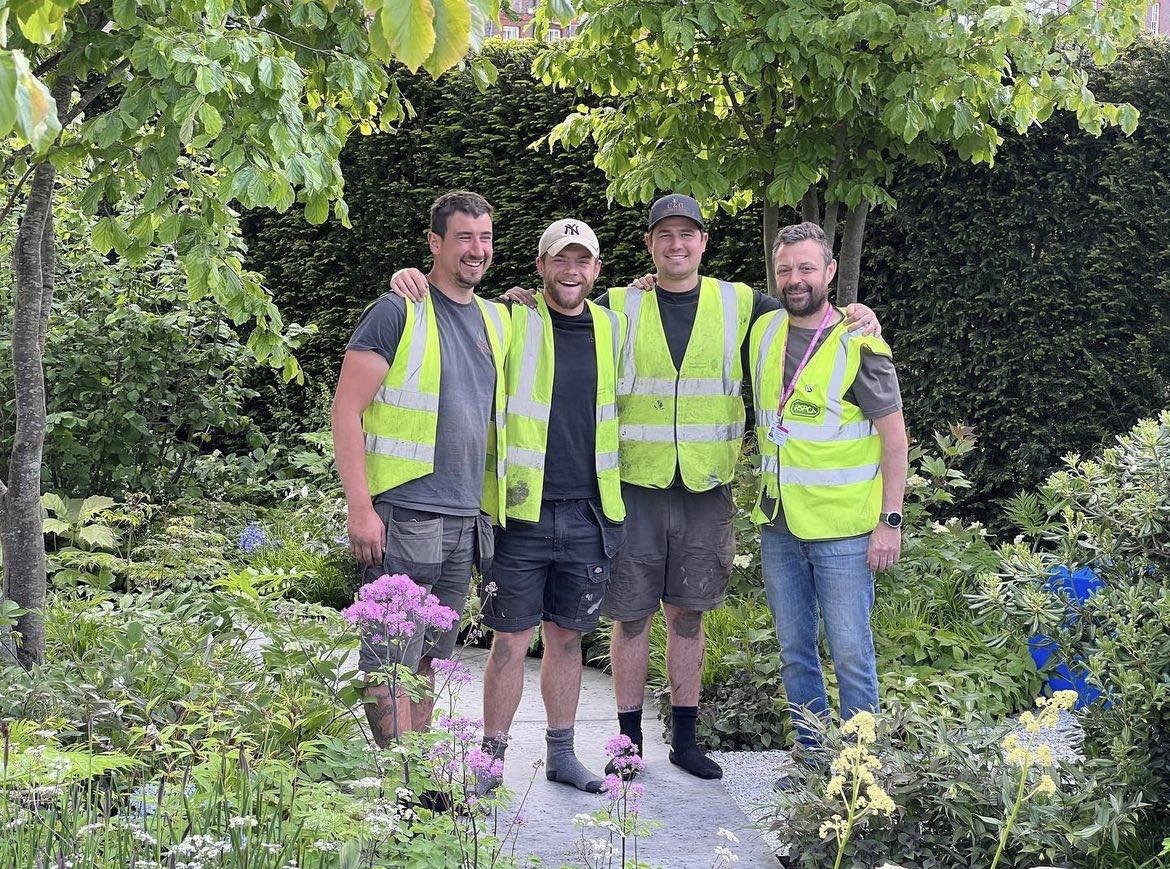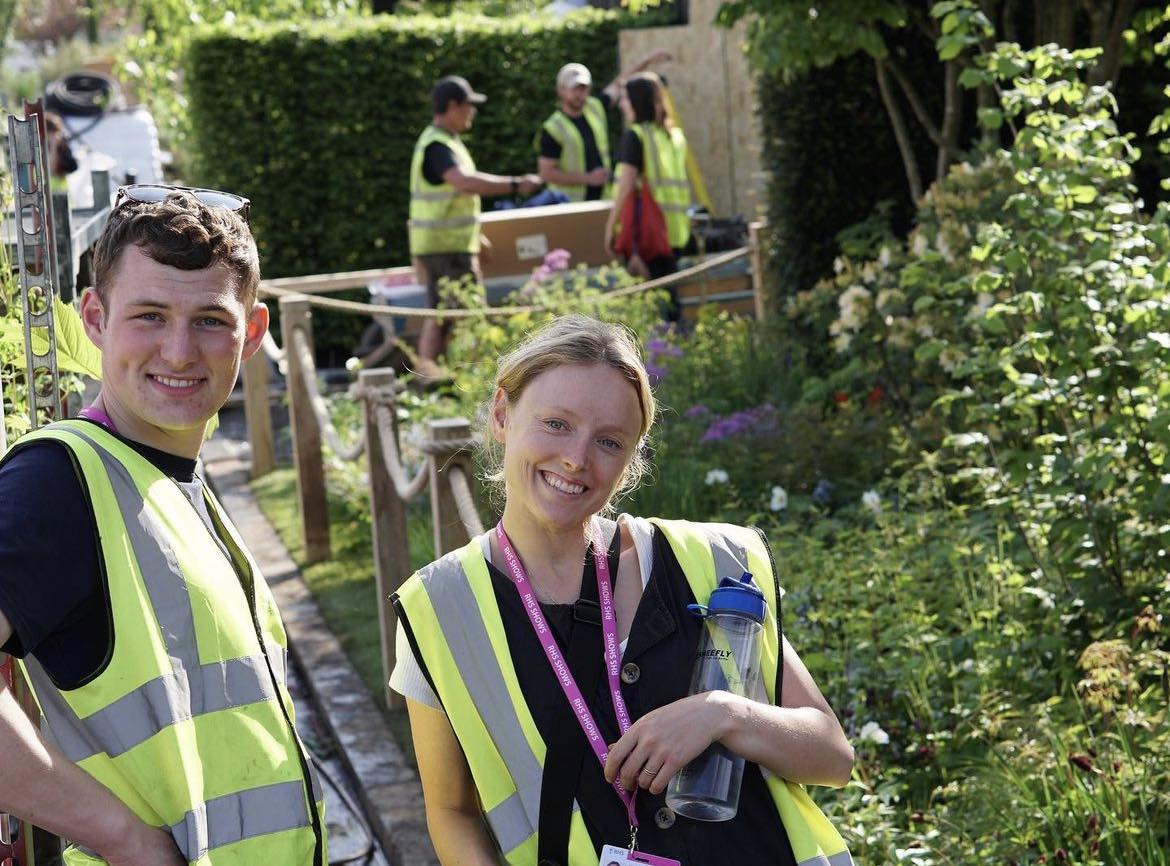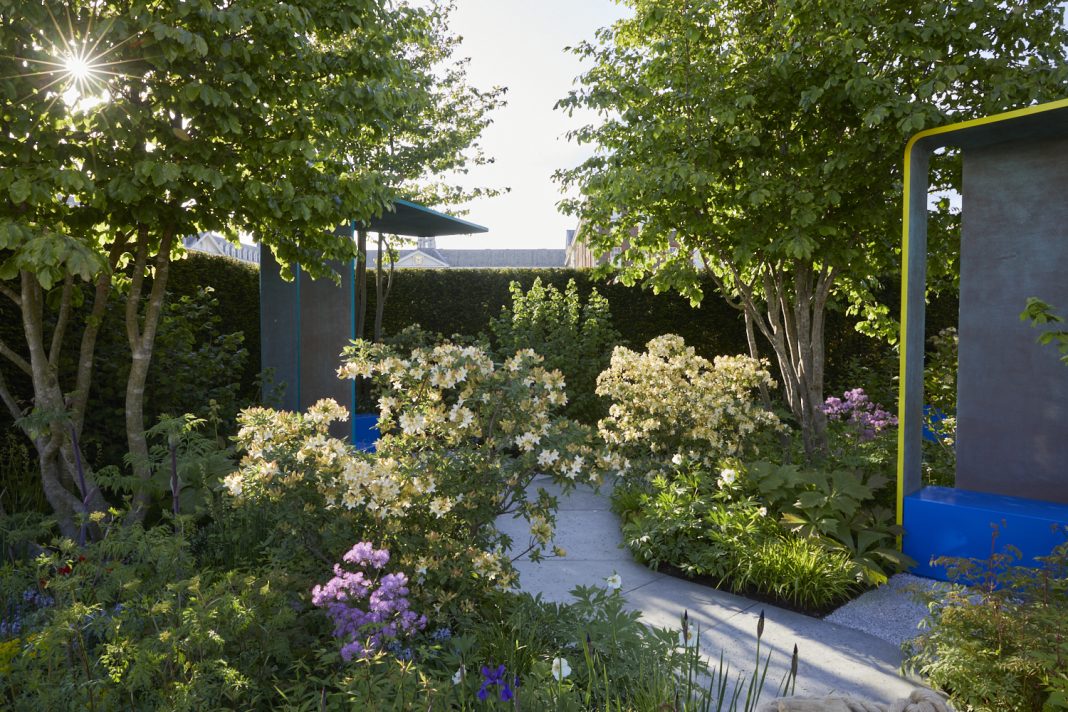Landscape designer Charlie Hawkes chats about his vision for a charity garden at this month’s RHS Chelsea Flower Show; a space for those with rare dementias

words Miriam Methuen-Jones | photography Britt Willoughby Dyer
Even if hardy perennials and evergreens wilt under your care, you’ll have heard of the RHS Chelsea Flower Show.
It’s accepted as the gardening event of the year, the place to find new ideas and surround yourself with cutting-edge design. The RHS Chelsea Flower Show is on this month, open to visitors from the 23rd of May until the 27th.
For the second year in a row, up-and-coming landscape designer Charlie Hawkes is creating a charity garden for the prestigious event.
CAREER HIGHLIGHTS
Hawkes has had a varied career so far, having started out in a very different industry to the one in which he is now making his name.
“It took me a while to get into it,” he admits. “I was good at maths at school so ended up doing economics at university. I thought I’d better get a job that related to my degree, so I got a place on a finance graduate scheme – and then had a midlife crisis after about a year.”
Hawkes quickly realised he was on the wrong path and, trying to work out his next step, he was weighing up a career in gardening or one in architecture.
“Someone said: ‘you know, there’s a thing called landscape architecture’. I hadn’t heard of it. I suppose it’s not the sort of thing the average school careers advisor knows about.”
GREAT DIXTER
He ended up doing a Masters in landscape architecture at Edinburgh College of Art (“two years of study plus spending my summers gardening”) before embarking on six weeks at Great Dixter, the house built by Lutyens in East Sussex that was home to the great gardening writer Christopher Lloyd and is now a charitable trust.
“Working at Great Dixter was a pivotal moment,” says Hawkes. “It’s such an amazing, creative, energising institution. With student gardeners, all being led by [horticultural educationalist] Fergus Garrett, there’s so much energy there that the level of gardening is incredibly high.
After being stuck in the studio doing lots of computer work for my Masters, getting out and doing some real gardening was key.

GRAVETYE MANOR
“That same summer, after finishing my degree, I also went to Gravetye Manor, which has one of the best wild gardens in the country.
It was created by William Robinson, a 19th-century garden writer. Nowadays, every-one is rewilding and doing wild gardens – loose around the edges, naturalising bulbs – but he was doing that a century ago. It’s amazing to see how relevant his writing still is today.”
After Gravetye Manor, Hawkes got a job working for Tom Stuart-Smith, whose award-winning studio has a reputation for gardens which combine naturalism and modernity. “It was an amazing studio,” remarks Hawkes.
“But that itch I had before – to get out and garden – started to build up again. I was learning so much about design and about plants, but you can’t really learn about plants unless you’re going out and gardening them.”
MILLENNIUM FOREST
This itch coincided with Hawkes’s partner Alice, now his wife, wanting to live abroad, so the enterprising couple agreed on a stint in Japan.
After two months of taking language lessons, Hawkes applied for a place on the pioneering Millennium Forest conservation project in Tokachi, and was accepted.
“It was the most unbelievable experience,” he enthuses. “We lived on the edge of this forest in this green and red gingerbread-like house. The commute was a five-minute walk through Japanese flora. The stuff you see at the Chelsea Flower Show is growing in the woods for them…”
After an intensive gardening education in Japan, Hawkes returned to Tom Stuart-Smith for a year and a half before branching out on his own in 2021.
Just a year later, he earned an RHS Gold Medal for his submission in the ‘All About Plants’ category. He’s back again this summer with an unusual and inspiring concept.
RHS CHELSEA FLOWER SHOW
“Project Giving Back is this amazing, anonymously-funded organisation that invites charities to pair up with a designer and apply for a Chelsea garden,” he explains.
“If the RHS accepts the design, PGB will fully fund the garden, but the charity’s name will be on the front of it. It’s an incredibly generous project and so many charities are benefiting.
All the gardens have to be relocated after-wards, to ensure a lasting legacy for the charity and as a more sustainable alternative to the ‘build and bin’ approach that Chelsea has been guilty of in the past.”
Hawkes was put in touch with The National Brain Appeal, a charity dedicated to improving the lives of people affected by neurological and neuromuscular conditions.
“Most people think that dementia is old people forgetting stuff,” he says. “But 20% of all dementia is a rare type; one of these is called Posterior Cortical Atrophy (PCA). It can initially cause visual problems.
Your eyes could be working completely fine, but the bit of the brain that receives information from your eyes is faltering and not performing properly.”

RARE SPACE SANCTUARY GARDEN
The design brief for this garden (named the ‘Rare Space’ Sanctuary Garden) is a response to rare dementias, including PCA.
It is, in essence, about simplicity and contrast. The whole garden is level, so it is wheelchair accessible.
The path is one single loop (rather than branching off in different directions), with seating areas jutting off it. People are less likely to feel lost when navigation is simplified like this.
The path is paved with large-format concrete blocks, minimising the number of joints and, by extension, the amount of visual disturbance.
The pointing is also concrete, so is almost invisible. In the seating areas, the ground is self-binding gravel which will provide a textural shift and indicate that you’re off the main path.
ACCESSIBLE FOR ALL
All the benches are blue, to create a simple visual language. “They don’t have backrests or armrests,” says Hawkes.
“Usually a bench is considered accessible if it has these features, but here we want to remove additional visual language that could be confusing.
People living with rare dementias are often young and still physically able.”
Each of the seating zones has been designed to feel different: one is a communal area, one is open and sunnier, one is slightly shadier and for two people.
They all have a Verdigris fibreglass shelter over them, and each shelter is edged in a bright colour (yellow, turquoise or pink) as a wayfinding mechanism.
PLANTING SCHEME
In terms of planting, there’s a notable lack of dappled light in this garden, and that’s deliberate.
“People love dappled light – it’s a beautiful effect,” agrees Hawkes, “but a perforated shadow can be disorientating for someone living with PCA. So, we’ve gone with Parrotia persica [Persian ironwood] which has a dense canopy and will cast a solid shadow.
I’ve used a yew boundary to frame those trees, to provide contrast without visual disturbance.”


FINISHING TOUCHES
Three water features, each with small, chiselled-edge pillars which will overflow from the top (“a classic reflective water pool wouldn’t be ideal”), are also tucked into the planting.
Though largely unseen, their sound will add to the soothing atmosphere.
“The key is balancing a sense of discovery by not revealing everything at once, but at the same time not over-compartmentalising which could make someone feel lost.
You’ll be able to get a sense of the whole from any one point in the garden which will provide the opportunity for independent exploration.”
It has been a complicated brief to execute, but Hawkes has approached the challenge with enthusiasm. It certainly sounds like another gold medal in the making.


WINNING THE GOLD
Charlie and his team scooped the gold for their garden at the Chelsea Flower Show.
He said, “Over the moon that our Brain Appeal Chelsea garden has just won a gold medal. And it’s only happened because of the epic team involved. Thank you to all of them and their uber skills.”
They also went on to be awarded Best Sanctuary Garden and Best Construction Award (Santuary Garden). Brain Appeal said on Instagram, “A big thank you to the amazing team involved and to our garden sponsor Project Giving Back for making our Rare Space a reality.”
Congratulations Charlie and his team!
WHO’S INVOLVED?
Garden Design Charlie Hawkes
Charity The National Brain Appeal
Sponsor Project Giving Back
Contractors Landscape Associates
Plants Supplier Hardy’s Cottage Garden Plants





